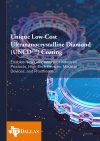The University of Illinois found that disparities in STEM could be linked to student experiences of racial microaggressions, making it difficult to continue a STEM education
Researchers feel that this could be a contributing answer to why non-white students are underrepresented in STEM education programmes across the United States.
Jasmine Collins, assistant professor of organisational and community leadership in the Agricultural Leadership, Education and Communications program at Illinois and co-author of the study, said: “Racial microaggressions are subtle, as opposed to overt, behaviors or remarks that can serve to demean, degrade, invalidate, or otherwise make a person take a step back to try to figure out, ‘was that because of my race?’
“That’s the difficult thing about racial microaggressions, they can catch you off guard to a point where, in the moment, you may not necessarily know how to react.”
What are racial microaggressions?
Invented by Harvard University psychiatrist Chester M Pierce in 1970 to describe the way non-Black individuals insulted and dismissed Black Americans, the term has been expanded over the last five decades to include all marginalised groups.
Microaggressions are are omnipresent in the world we live in. The social fabric of everyday life is filled with various hostilities, for instance, as you can see in America post-9/11 for Muslims, or in a Wall Street boardroom for any woman. It can be present even in outwardly positive comments, if those comments are singling out a group and making some stereotypical assumptions about that group. It is a way to tell a marginalised individual that they don’t belong.
The qualitative data of 4,800 students of colour
Professor Collins and her research colleagues examined the experiences of 4,800 non-white students in STEM majors, who discussed their experience of racial microaggressions on three levels. The first was on campus in general, the second was in academic settings, and the third with other students.
In general, Black men and women, Latina women, Asian women and Indigenous women reported racial microaggressions happening more commonly at the general campus level than in classrooms or between other students.
A significant contribution of this study, Collins explains, is the layering of different levels at which students encountered microaggressions. “We introduce this framework of the campus racial climate to show how, for students of color in STEM who experience racial microaggressions, they not only receive messages in their classrooms, but it’s part of the institutional fabric.
“It’s the culture of the institution that tends to reinforce these messages.”
They found that Black students in STEM majors are the most likely to experience racial microaggressions, with Black women reporting the highest rates of negative comments and perceptions.
One Black woman who is a STEM student commented: “A lot of people automatically assume that since I’m a Black female that I should be a [non-STEM] major. Every time I walk into a lab, I always get looks.
“I’m not sure if it’s because I don’t ‘look’ like a [STEM] major in general or if it’s because I’m Black.”
Some students reported dropping out of STEM majors because of these experiences or having been encouraged by advisers to change to a non-STEM major, just to have a more successful college experience.
‘We’re losing a lot of talent’
Professor Collins further suggested that there needs to be institutional accountability to level the playing field, and include all students in all majors.
“In order to educate our workforce, students have to come through our doors and if these are the kinds of experiences [students of color] are facing. The campus signals to them they don’t belong in STEM, their peers in class don’t want to work with them because they think they’re incompetent, or their adviser recommends they switch majors because this might be too hard for them.
“If it’s just message after message saying, ‘you don’t belong here, you’re not smart enough, you’re not skilled enough to have this kind of job,’ then we’re losing a lot of talent in the pipeline.”
“It’s one of the reasons why we see such stark racial and gender disparities in the STEM workforce. And it really is a pipeline issue.”
Editor's Recommended Articles
-
Must Read >> How is contemporary Black activism reshaping itself?
-
Must Read >> New data examines presence of LGBTQ people in STEM





























